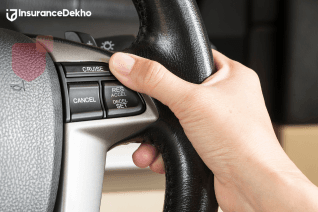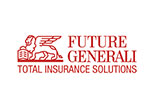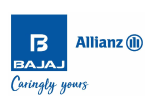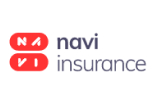Cruise Control in Car: How Does it Enhance Your Experience?
Cruise control, also known as speed control, cruise command, or tempomat, is a system that helps drivers maintain a steady speed without constantly pressing the gas pedal. This technology is designed to enhance comfort and safety by automatically adjusting the vehicle’s speed based on a preset value set by the driver. Let's explore the evolution, types, and benefits of cruise control in modern cars and motorcycles.
The Evolution of Cruise Control
The journey of cruise control started in 1948 when it first appeared in the Chrysler Imperial. The initial version was bulky and expensive, maintaining speeds between 30 to 35 mph. However, it wasn't practical for mass production. In 1958, a simpler version of cruise control was developed for the M-4 Tank, which could maintain a constant speed by controlling the throttle.
In 1968, Cadillac introduced the first fully electronic cruise control, which automatically adjusted the throttle to keep a consistent speed. By the 1970s, cruise control became a standard feature in most luxury cars, and by the 1980s, it was common in most vehicles.
As technology advanced, the 1990s saw the introduction of adaptive cruise control (ACC), which used radar or laser sensors to detect the distance between cars and adjust the vehicle’s speed accordingly. In the early 2000s, intelligent cruise control was developed, which could even detect speed limits and adjust the vehicle's speed automatically.
Types of Cruise Control Systems
-
Standard Cruise Control: The basic version of cruise control adjusts the vehicle’s speed using the throttle but doesn’t respond to surrounding traffic. It's a simple system that works well for steady highway driving.
-
Adaptive Cruise Control (ACC): Adaptive cruise control is a more advanced version that uses sensors like radar or cameras to maintain a safe distance from the vehicle in front. This system adjusts the speed of your car automatically based on traffic flow.
How Adaptive Cruise Control Works
ACC uses radar or cameras to monitor traffic ahead and automatically adjusts the car’s speed to maintain a safe following distance, making it ideal for highway driving and varying traffic conditions.
Its Benefits:
-
Increased Safety: ACC helps prevent accidents by maintaining adequate space between vehicles, which reduces the risk of collisions.
-
Traffic Flow Efficiency: The system can improve traffic flow by adjusting speeds smoothly and predictably.
-
Less Stress: With ACC, drivers don’t have to constantly adjust the speed, allowing them to focus more on their surroundings.
Benefits of Using Cruise Control
-
Enhanced Comfort and Convenience:
Cruise control takes over the task of maintaining speed, allowing the driver to relax and focus on the road. This reduces the mental load, especially during long drives. -
Better Fuel Efficiency:
By maintaining a consistent speed, cruise control minimizes fluctuations in fuel consumption, which can result in better fuel economy over long trips. -
Consistent Speed Maintenance:
Drivers often use cruise control to stay within speed limits, avoiding speeding tickets by maintaining a legal, steady speed on highways. -
Reduced Driver Fatigue:
Continuous driving at varying speeds can lead to fatigue, which in turn increases the risk of accidents. Cruise control helps alleviate this by keeping a consistent speed and allowing the driver to rest more.
Cruise Control in the Indian Context
In India, cruise control is particularly useful on highways and long-distance drives. While it’s not as effective in heavy traffic conditions, where constant braking and speed adjustments are required, it works well on open roads, reducing driver fatigue and making long journeys more enjoyable.
Adoption of Cruise Control in Indian Cars
Adaptive cruise control is becoming more popular in India, even in affordable cars. Drivers appreciate the comfort of not having to constantly adjust their speed, especially on highways. This feature is expected to become standard in many cars in the near future due to its safety and convenience benefits.
Popular Cars in India with Cruise Control
-
Tata Altroz (Starting Price: Rs. 7.55 Lakh)
-
Hyundai Exter (Starting Price: Rs. 8.10 Lakh)
-
Renault Kiger (Starting Price: Rs. 8.95 Lakh)
-
Mahindra Thar (Starting Price: Rs. 9.99 Lakh)
Motorcycles with Cruise Control
-
TVS Apache RTR 310
-
KTM Duke 390
-
Kawasaki Ninja ZX-10R
-
Yamaha FJR1300
-
Ola S1 Pro (Electric Scooter)
Safety Considerations and Best Practices
While cruise control offers many benefits, it’s important to use it wisely:
Limitations:
-
Driver Fatigue: Cruise control can make long trips more comfortable, but it can also increase the risk of falling asleep behind the wheel. Never use cruise control if you’re feeling tired.
-
Difficulty in Slowing Down Quickly: Cruise control can make it harder to slow down quickly, especially when making sharp turns or avoiding obstacles.
-
Poor Weather Conditions: Using cruise control in bad weather (like rain, snow, or icy conditions) can be risky because it may prevent you from slowing down in time to avoid hazards.
Safe Operation Tips:
-
Know Your Vehicle’s Cruise Control Settings: Familiarize yourself with the settings and how to activate/deactivate the system.
-
Practice in Safe Conditions: If you’re new to cruise control, practice using it on open roads to get comfortable with the system.
Cruise control technology has come a long way since its inception, and adaptive cruise control (ACC) is now an essential feature for improving safety, comfort, and driving efficiency. With the ongoing advancements in this technology, it’s clear that cruise control will continue to shape the future of driving, making long-distance travel safer and more enjoyable for drivers and riders alike.














































